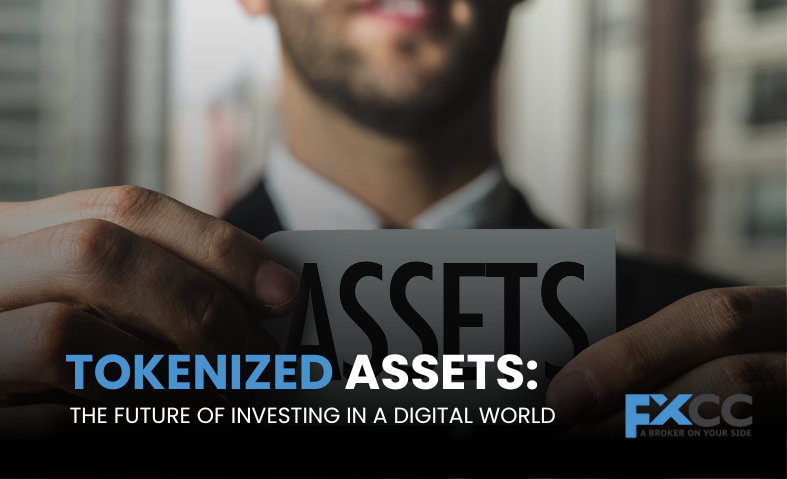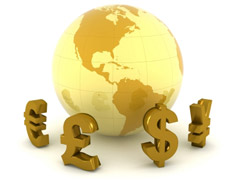The financial landscape is undergoing a seismic shift, driven by the rapid evolution of blockchain technology and the rise of digital assets. Among the most transformative innovations in this space is the concept of tokenized assets. Tokenization, the process of converting real-world assets into digital tokens on a blockchain, is poised to revolutionize the way we invest, trade, and manage wealth. As the world becomes increasingly digital, tokenized assets are emerging as the future of investing, offering unprecedented opportunities for accessibility, liquidity, and transparency.

What Are Tokenized Assets?
Tokenized assets are digital representations of physical or intangible assets, such as real estate, art, commodities, stocks, or even intellectual property. These tokens are created using blockchain technology, which ensures security, immutability, and transparency. Each token represents a fraction of the underlying asset, enabling investors to own a share of high-value assets that were previously inaccessible or illiquid.
For example, a luxury property worth $10 million can be tokenized into 10,000 digital tokens, each representing a 0.01% ownership stake. Investors can purchase these tokens, allowing them to participate in the real estate market without needing to buy the entire property. This fractional ownership model democratizes access to investment opportunities, making it possible for individuals with limited capital to diversify their portfolios.
The Benefits of Tokenized Assets
- Increased Liquidity
One of the most significant advantages of tokenized assets is the enhanced liquidity they provide. Traditional assets like real estate, fine art, or private equity are often illiquid, meaning they cannot be easily bought or sold. Tokenization transforms these assets into tradable digital tokens, enabling investors to buy and sell them on secondary markets with ease. This liquidity unlocks value and allows investors to exit positions more efficiently. - Fractional Ownership
Tokenization breaks down barriers to entry by enabling fractional ownership. High-value assets that were once reserved for wealthy individuals or institutional investors are now accessible to a broader audience. This inclusivity fosters a more equitable investment landscape, empowering retail investors to participate in markets that were previously out of reach. - Transparency and Security
Blockchain technology underpins tokenized assets, providing a transparent and secure framework for transactions. Every transaction is recorded on a decentralized ledger, ensuring immutability and reducing the risk of fraud. Smart contracts, self-executing agreements coded on the blockchain, automate processes like dividend distribution or ownership transfers, further enhancing efficiency and trust. - Global Accessibility
Tokenized assets operate on a borderless platform, enabling investors from around the world to participate in global markets. This eliminates geographical barriers and reduces the complexity of cross-border transactions. Investors can diversify their portfolios by accessing international assets, while issuers can tap into a global pool of capital. - Cost Efficiency
Traditional asset transactions often involve intermediaries, such as brokers, lawyers, or custodians, which can drive up costs. Tokenization streamlines these processes by leveraging blockchain technology, reducing the need for intermediaries and lowering transaction fees. This cost efficiency benefits both issuers and investors.
Real-World Applications of Tokenized Assets
The potential applications of tokenized assets are vast and span across various industries. Here are a few examples:
- Real Estate
Real estate tokenization stands out as one of the most promising applications of blockchain technology. By tokenizing properties, developers can raise capital more efficiently, while investors can gain exposure to real estate markets without the burden of property management. Platforms like RealT and RedSwan are already pioneering this space, offering tokenized real estate investments to a global audience. - Art and Collectibles
The art market has long been dominated by elite collectors and institutions. Tokenization is democratizing access to this market by allowing fractional ownership of high-value artworks. Platforms like Maecenas and Masterworks enable investors to buy shares in iconic pieces, such as paintings by Picasso or Banksy. - Commodities
Tokenized commodities, such as gold, oil, or agricultural products, provide investors with a convenient way to gain exposure to these markets. For instance, companies like Paxos and Digix offer tokenized gold, allowing investors to own and trade digital representations of physical gold bars. - Equity and Debt
Tokenized securities, including stocks and bonds, are gaining traction as a more efficient alternative to traditional financial instruments. Companies like tZERO and Securitize are leading the charge in this space, offering tokenized equity and debt instruments that comply with regulatory requirements.
Challenges and the Road Ahead
Despite its immense potential, the tokenization of assets is not without challenges. Regulatory uncertainty remains a significant hurdle, as governments and regulatory bodies grapple with how to oversee this emerging asset class. Ensuring compliance with existing laws while fostering innovation will be crucial for the widespread adoption of tokenized assets.
Additionally, the technology is still in its early stages, and issues such as scalability, interoperability, and cybersecurity need to be addressed. As the ecosystem matures, collaboration between industry stakeholders, regulators, and technology providers will be essential to overcome these obstacles.

Tokenized assets represent a paradigm shift in the world of investing, offering a more inclusive, efficient, and transparent way to access and trade value. By leveraging blockchain technology, tokenization is breaking down barriers, unlocking liquidity, and democratizing opportunities for investors worldwide. While challenges remain, the potential benefits far outweigh the risks, making tokenized assets a cornerstone of the digital economy.


